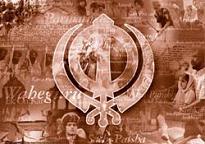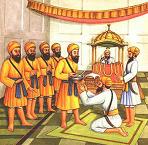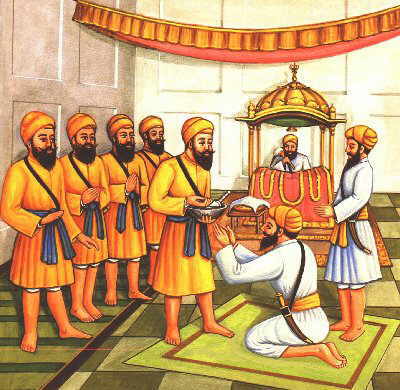

by Kirpal Singh M.A.
 |
Sikh Missionary Society U.K. (Regd)
10, Featherstone Road.
Southall, Middx, U.K. UB2 5AA
Tel: +44 020 8574
1902
Fax: +44 020 8574
1912
Reg Charity No: 262404
|
 |
|
|---|---|---|---|
|
by Kirpal Singh M.A. |
|||

This book explains why the Sikhs have their distinctive appearance and the importance they attach to their outward form. |
ContentsAcknowledgementPrefaceThe Sikh Symbols1. Introduction2. The Background3. A New Turning Point and the Great Test4. The Five K's5. The Importance of Hair in Sikh Philosophy and Practice6. The Turban7. The Hair and Other Religions8. Hair and Health9. The Hair and the Sikh Sacrifices10. Free and Universal Man11. The Guru's injunctions on the Sikh FormA Word to Young SikhsThe Sikh Anthem |
Not to remember the past is to remain a child and not to learn from history is a tragedy. Our Gurus and innumerable Sikhs laid down their lives for upholding the universal Sikh principles and keeping alive the form and the spirit of Khalsa. The principles do not admit changes simply because they do not suit some people, who care more for the passing fashions than for the ever-enduring inspired word of the Guru. Let us not be carried away by the prevailing wind of fashions and forget one of our basic principles of keeping the hair intact.
Remember, to Guru Gobind Singh nothing was dearer than the appearance and actions of a Sikh. That is why he modelled the Sikhs on Himself and declard, "RAHNI RAHE SOl SIKH MERA, OH SAHIB MAIN USKA CHERA (Only him shall I call my Sikh wo lives by the principles laid down for him by me. I wouldn't hesitate to accept such a Sikh as my master). Let us keep our Guru's word in our hearts and live up to his expectations.
Instead of compromising with the circumstances let us manfully face and overcome them remembering that Keshas are not superfluous. The hair signify our bond with the Guru who is the embodiment of all that is pure and good in this universe. We are the saint soldiers of Guru Gobind Singh and like all, loyal soldiers we must unquestionably follow the Guru's command. COME, let us prove worthy of the great trust reposed in us by the Guru communicated to us in the following words -
"The sun may rise from the West, the Ganges may flow backwards; June may experience snow, the breeze may burn the woods; The pole star may leave its place, the deserts may become oceans; The mountains may fly in the air, But my Khalsa shall not disobey and desert me."
| DEH SHIVA BAR MOHE IHAY
SHUBH KARMAN TE KABHOUN NA TARAUN |
O' Lord grant me the wish that I may never flinch from performing the righteous deeds |
| NA DARAUN ARR SION JAB JAI LARON
NISCHAY KAR APNI JIT KARAUN |
That I may never be afraid of the enemy, and I have the supreme confidence to win |
| AR SIKH HAUN APNAY HEE MAN KAUN
IHO LALACH HAl GUN TAU UCHRAUN |
Let one directive guide my mind exclusively that I may ever be singing thy praises |
| JAB AAV KEE AUDH NIDHAN BANAY,
UTHI RAN MAI TAB JOOJH MARAUN |
And when the time comes, I should die fighting heroically on the battle field |
This hymn was the favourite prayer of Guru Gobind Singh. The Guru uses the word SHIVA for God and not the Hindu deity. Heroic death on the battlefields, singing the praise of the Lord is the goal of Guru Gobind Singh and the Khalsa.